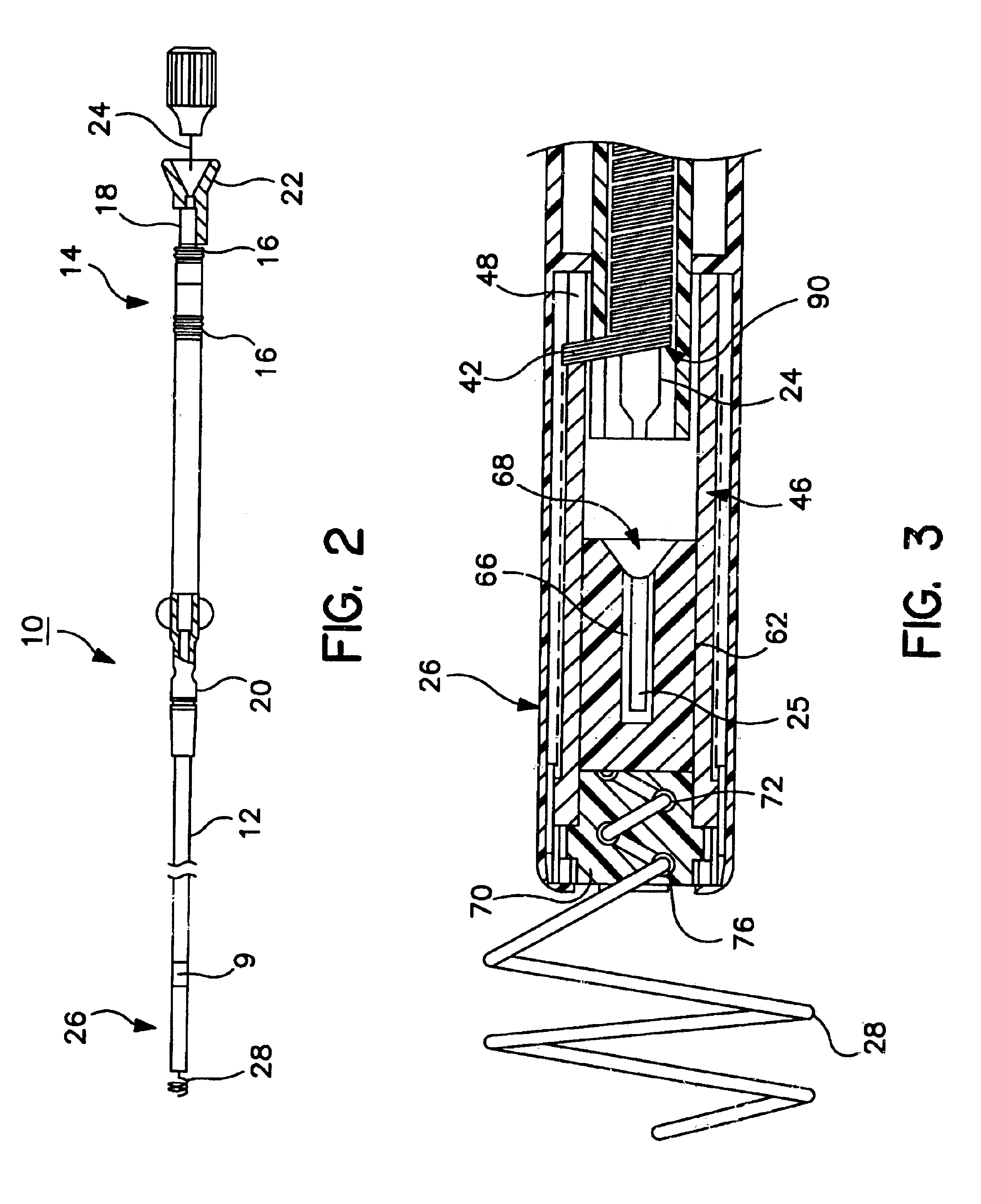System and method for positioning an implantable medical device within a body
- Summary
- Abstract
- Description
- Claims
- Application Information
AI Technical Summary
Problems solved by technology
Method used
Image
Examples
Embodiment Construction
[0029]FIG. 1 is a perspective view of lead 10 according to the present invention, which is shown implanted in a heart 4. As seen in this embodiment, an implantable pulse generator 2 is coupled to a lead 10 by connector 5 as is well known in the art. Pulse generator 2 may be any model capable of sensing and stimulating two or more chambers of the heart 4 with at least one situated on the left side of heart 4. As further seen, in this embodiment, lead 10 may feature include one or more ring electrodes disposed along the lead body. In the illustrated embodiment, two ring electrodes 7 (right atrium) and 9 (left atrium) are shown. This embodiment further includes a helix 28 which extends beyond the distal end of the lead 10. Upon deployment, the helix expands and wedges within the coronary sinus, cardiac veins, or another vessel. This ensures excellent contact is maintained between the electrode 28 and the heart while also maintaining the lead 10 at the predetermined site of implant. The...
PUM
 Login to View More
Login to View More Abstract
Description
Claims
Application Information
 Login to View More
Login to View More - R&D
- Intellectual Property
- Life Sciences
- Materials
- Tech Scout
- Unparalleled Data Quality
- Higher Quality Content
- 60% Fewer Hallucinations
Browse by: Latest US Patents, China's latest patents, Technical Efficacy Thesaurus, Application Domain, Technology Topic, Popular Technical Reports.
© 2025 PatSnap. All rights reserved.Legal|Privacy policy|Modern Slavery Act Transparency Statement|Sitemap|About US| Contact US: help@patsnap.com



